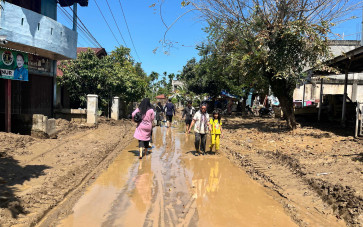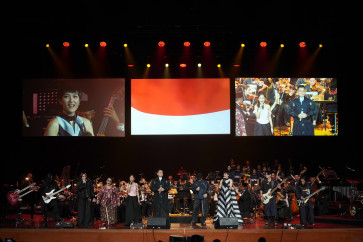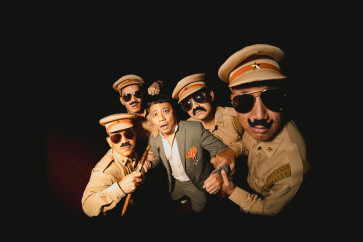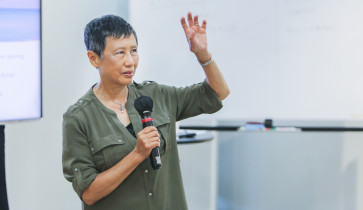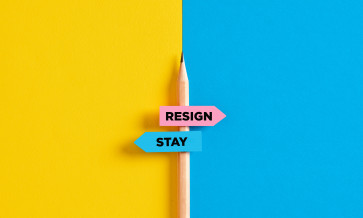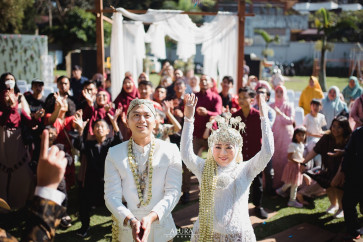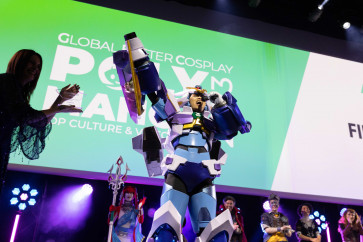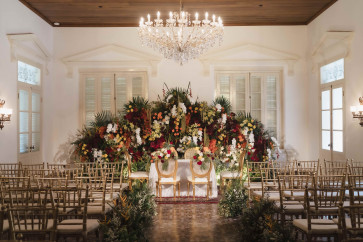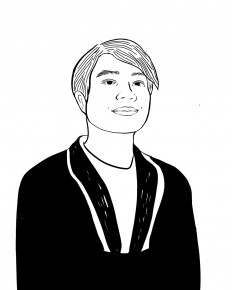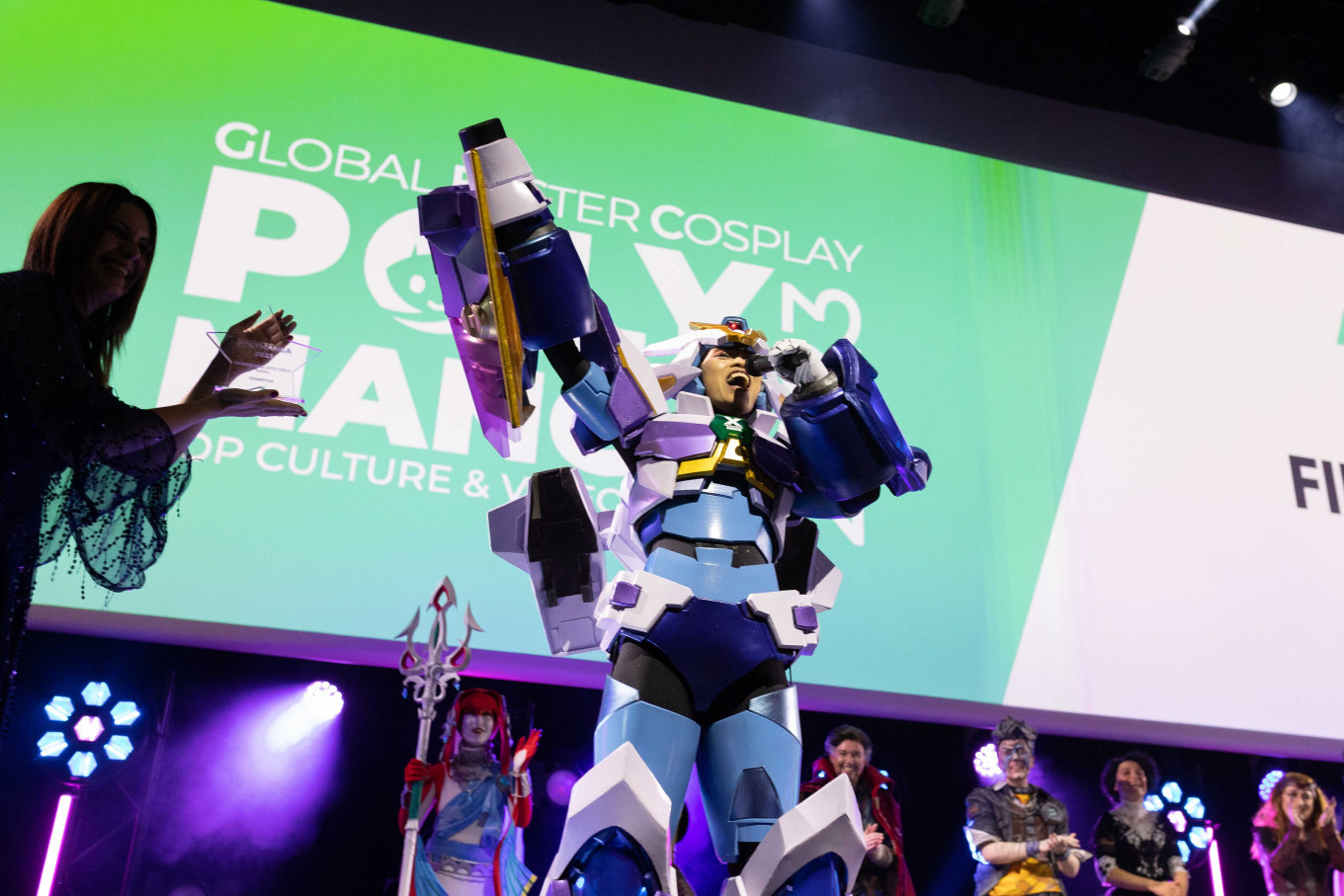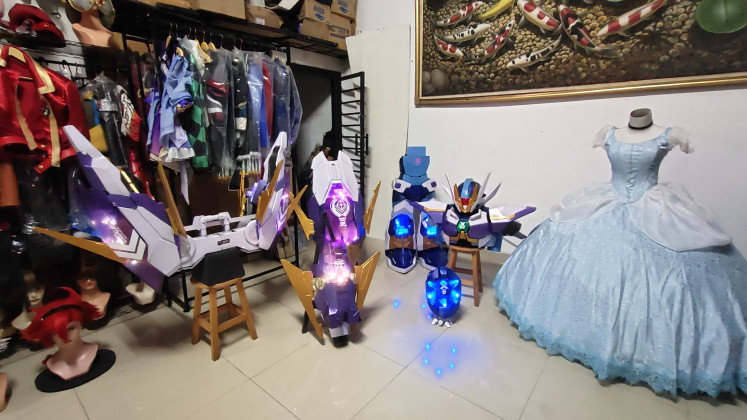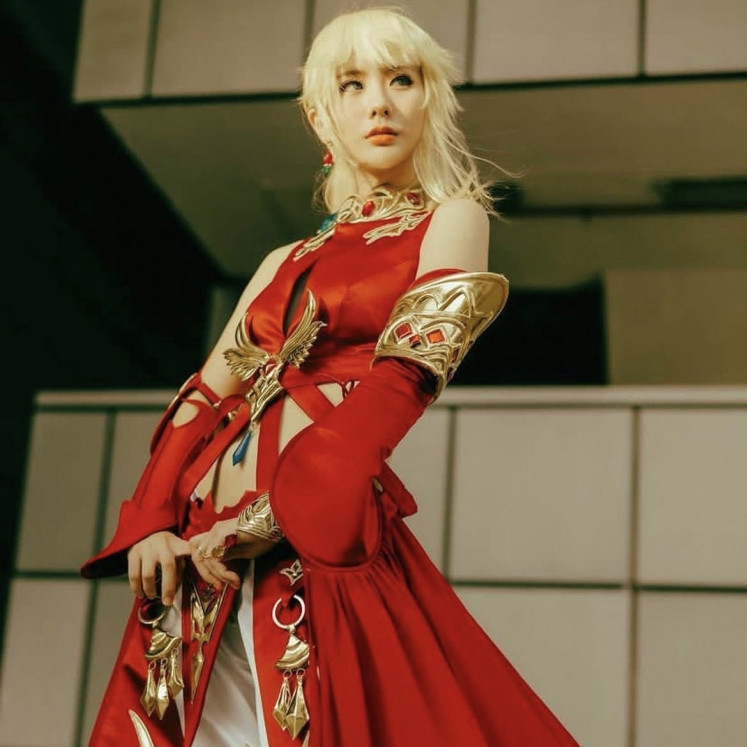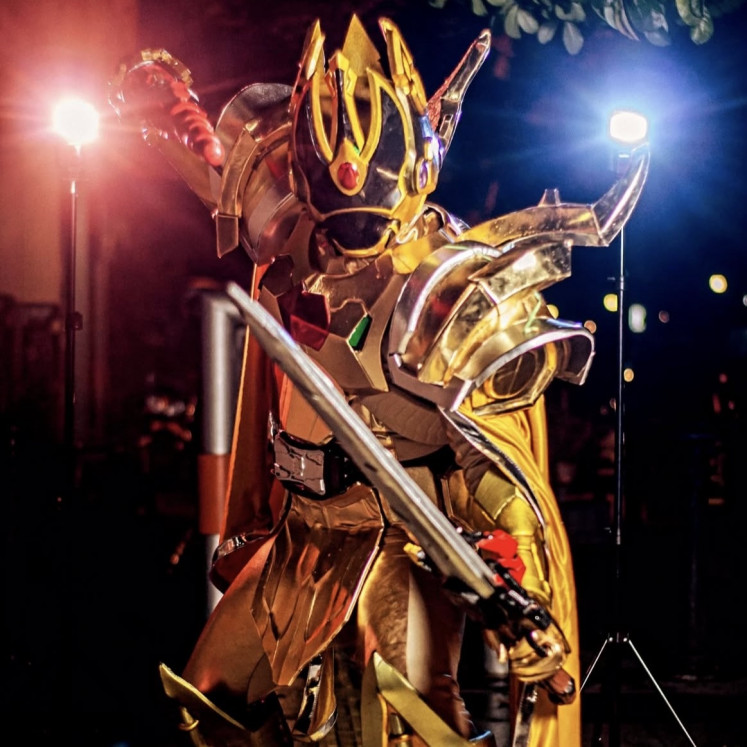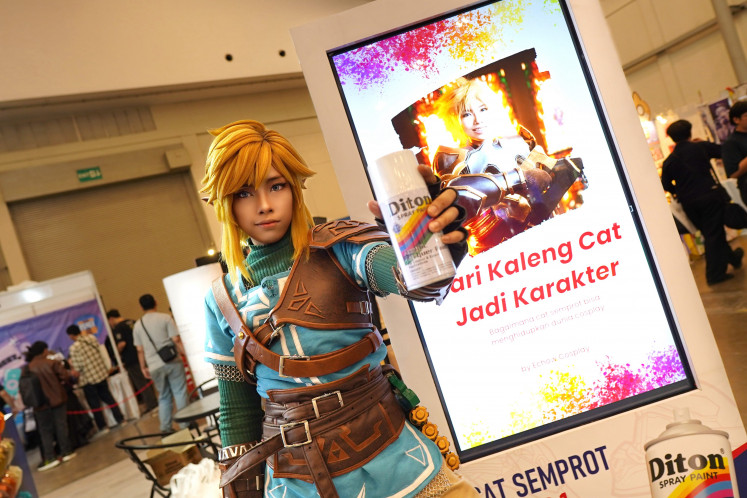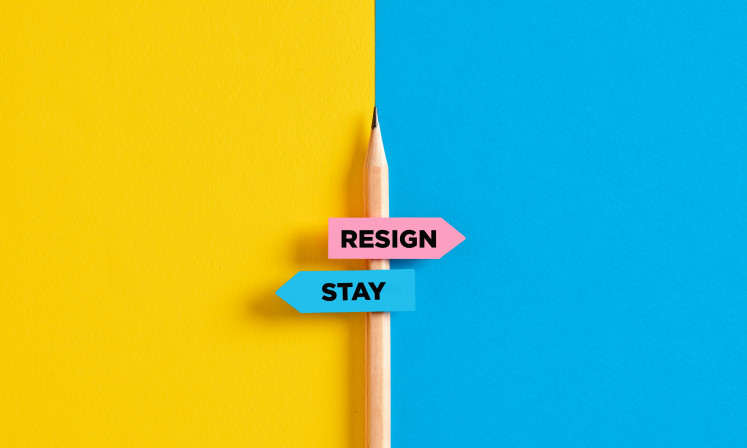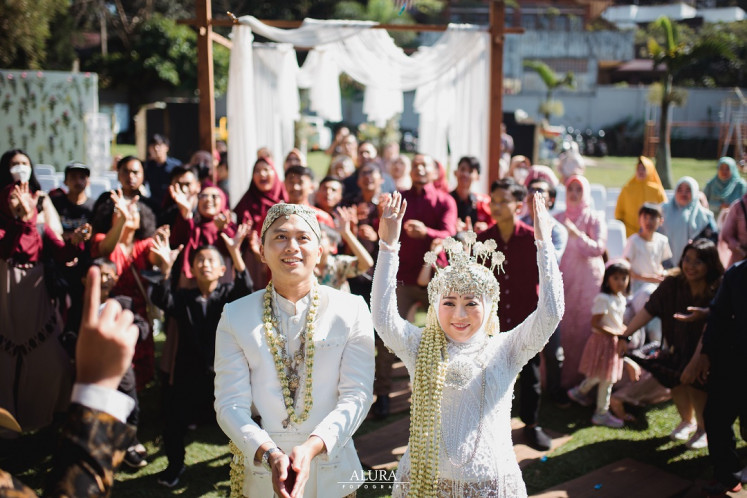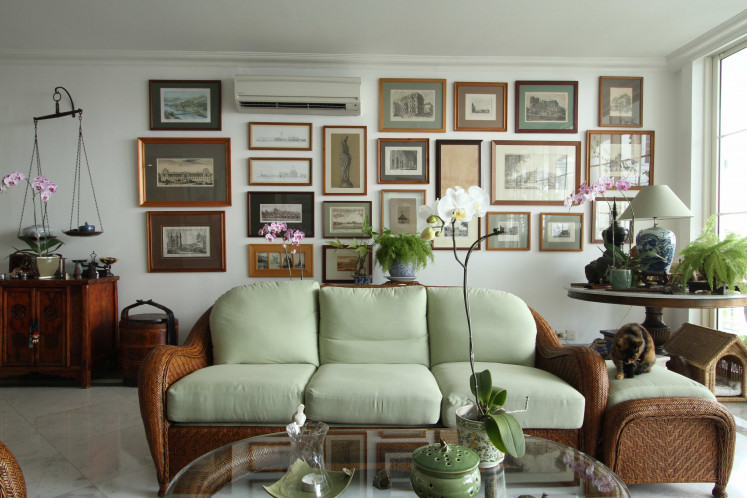It starts with a frame-by-frame freeze of a striking scene. A sketch follows, then swatches of fabric, a quick trip to stores to look for foam, resin and something that sparkles just enough. The goal is not just to replicate a look, but to inhabit a character completely.
While October brings a slight bump in demand, for Indonesia’s growing network of costume makers, Halloween is just a checkpoint. Their real calendar runs year-round, from cosplay—a portmanteau of costume and play—events to anime conventions, brand gigs and commissioned one-offs.
"It’s pretty much the same level of hectic as any other month,” Benita Octaviano of Bedaclo Custom tells me.
The cosplay community ballooned after the pandemic, according to Rezha Vaizal, the founder of Owls Costume Creative.
“Now it’s kind of crazy, there’s really an event every week in all the cities. It used to be maybe once or twice a month,” he says.
And with that explosion comes a surge in demand, visibility and income.

Thank you!
For signing up to our newsletter.
Please check your email for your newsletter subscription.
From hobby to hustle
Indonesia’s cosplay economy has become big business. Social media accounts like @cosplayjakarta and @infojejepangan.id have gained 66,000 and 135,000 Instagram followers respectively, helping fans track events happening almost every weekend. Massive conventions like Indonesia Comic Con and Comifuro routinely draw more than 30,000 and 50,000 attendees.
And behind every elaborate armor or near-perfect anime outfit is a workshop, often run by makers who started out as fans themselves.
“I started by personally cosplaying in 2006, making costumes for myself, gradually honing my skills,” says Echow of Echow Costume.
“I began competing internationally to represent Indonesia around 2012. Then I started getting requests and orders.”
(Echow Costume)
Rezha has a similar origin story: “I joined the community as an enthusiast. Then fellow hobbyists started asking if I could do commissions. That’s when I realized there’s a demand here.”
Benita Octavianao of Bedaclo Custom traces her career back to a more academic start: “I did cosplay in high school, and it was quite frustrating communicating the costumes I wanted to make to tailors at the time. So I studied fashion design, and I’ve been making costumes professionally for almost 10 years now.”
(Bedaclo Custom)
Each of them now leads a studio producing high-quality, often high-concept outfits using a blend of techniques and materials that span traditional tailoring, prop-making and tech-based fabrication.
Craft, upgraded
“We use a lot of different practices within costume-making that merge into the final product,” Echow explains.
“A lot of creative problem-solving is involved.”
All three makers recall how early efforts involved meticulous frame-by-frame analysis of anime or game scenes to understand costume construction. Now, alongside their hands-on skills, they’re fluent in 3D printing, EVA foam sculpting, resin work and detailed finishing with paint or silk.
Technology has helped, but the biggest leap forward is still human.
“I think that the people themselves are what improved the most,” Rezha said.
“Because now the basic techniques are more commonly known, it's easier to teach new people how to start—and in a proper way.”
. (Owls Costume Creative)
With experience, turnaround times have shortened too. What once took months can now be completed in a week, depending on complexity.
Not just for cosplay
Though local hobbyists still make up most of their client base—especially in Java—the demand is increasingly global.
“We’ve had clients from Malaysia, Singapore, Japan and China,” Rezha said.
“We’ve even gotten orders from Australia, and the delivery fee alone costs as much as the costume.”
Benita and Echow have shipped their work as far as the United Arab Emirates and the United States, though they agree most traffic remains domestic.
Corporate clients are also entering the mix.
“Now there's been a lot of companies and brands who have worked with us for marketing or event purposes,” says Benita.
“We got to make a costume for Isyana Sarasvati for an ad she was part of, and it was such an honor.”
Benita notes that her commissions today are roughly 60 percent individual and 40 percent corporate—a shift from the 80/20 split of five years ago.
Echow, meanwhile, is exploring another lane: education. She recently partnered with paint brand Diton to host beginner-friendly workshops.
“The Diton team was curious why I wanted to explore this educational avenue,” she says.
“But I figured there is a demand for it and I want to help facilitate the passion of this community.”
(Echow Costume)
Their booth at this month’s Indonesia Gaming Expo offered free classes for visitors interested in learning the basics.
A culture in full bloom
The spike in demand isn’t just about events, it’s about cultural familiarity. Thanks to streaming platforms and box office hits, characters from anime and games are no longer fringe.
Globally, anime on Netflix was viewed over 1 billion times in 2024, triple that of 2019. In Indonesia, Demon Slayer: Infinity Castle drew more than 2.2 million viewers, with over 540,000 tickets sold on opening day. It’s currently the 8th most-watched film in the country this year.
“Now more often than not, general audiences recognize what my costume is based on,” Echow said.
“Maybe 10 years ago this entertainment medium was reserved for a passionate niche, but now it's gone mainstream and it has a ripple effect on us costume makers.”
That ripple includes more curiosity, more commissions and greater appreciation for the skill involved—especially now, as Halloween grows in popularity and cosplay competitions fill calendars year-round.
Grounded in community
For all the business growth, the makers keep returning to one thing: community.
“There’s a shared passion for a singular thing,” says Rezha.
“It becomes an activity where you can admire each other’s work while also learning a thing or two.”
He notes how clients and collaborators often end up becoming friends—or finding out about future events through each other.
“There are a lot of newer costume makers, and I think it’s our responsibility to embrace them into the trade,” Echow agrees.
“To teach them the know-how and to remind them that it's supposed to be fun. It’s costume and play.”
And for Benita, the work remains as rewarding as ever.
“I'm passionate and find joy in these characters I make costumes of,” she says.
“It's a job for me now, yes, but it's also a creative endeavor that mixes fashion with a bit of engineering.”
In other words, the magic is still intact, just with better tools, stronger threads and a growing audience.
Aqraa Sagir is a writer for The Jakarta Post's Creative Desk. He’s chronically online in the hope it would be a useful asset for the job.




